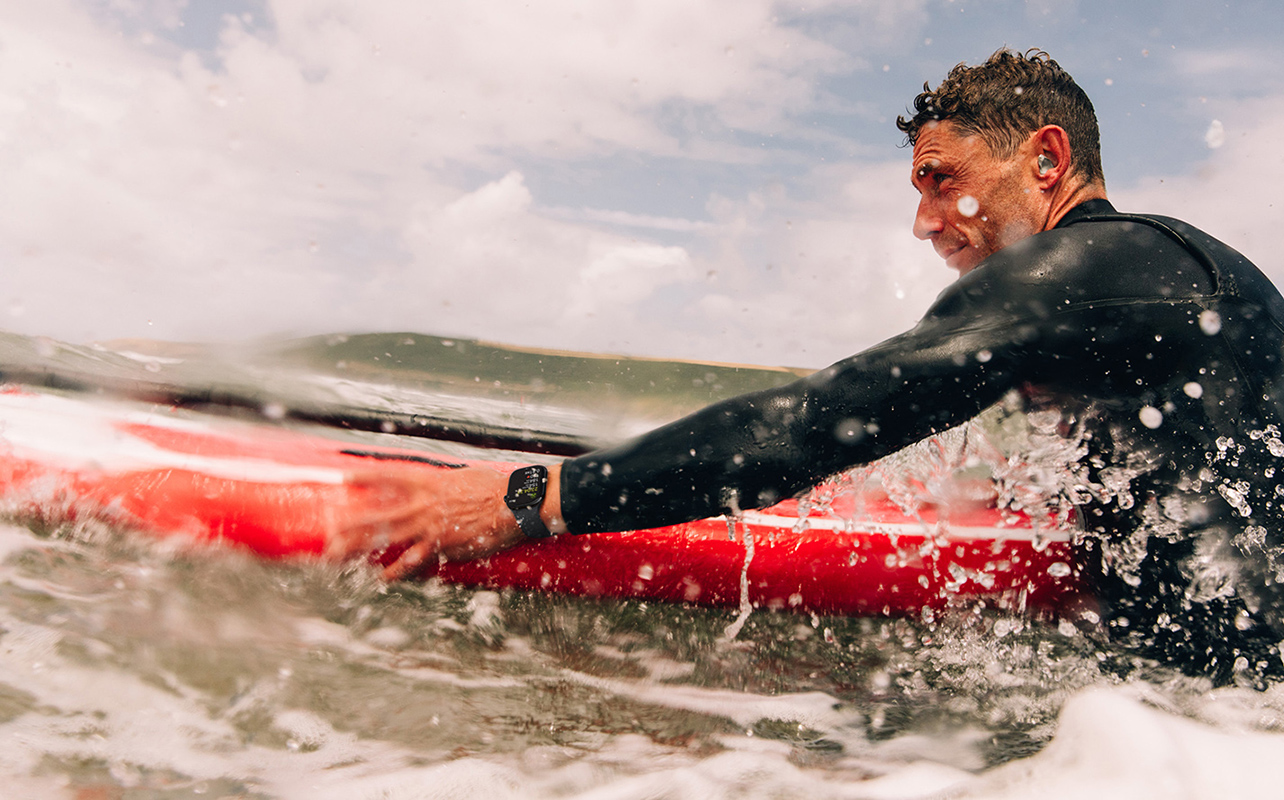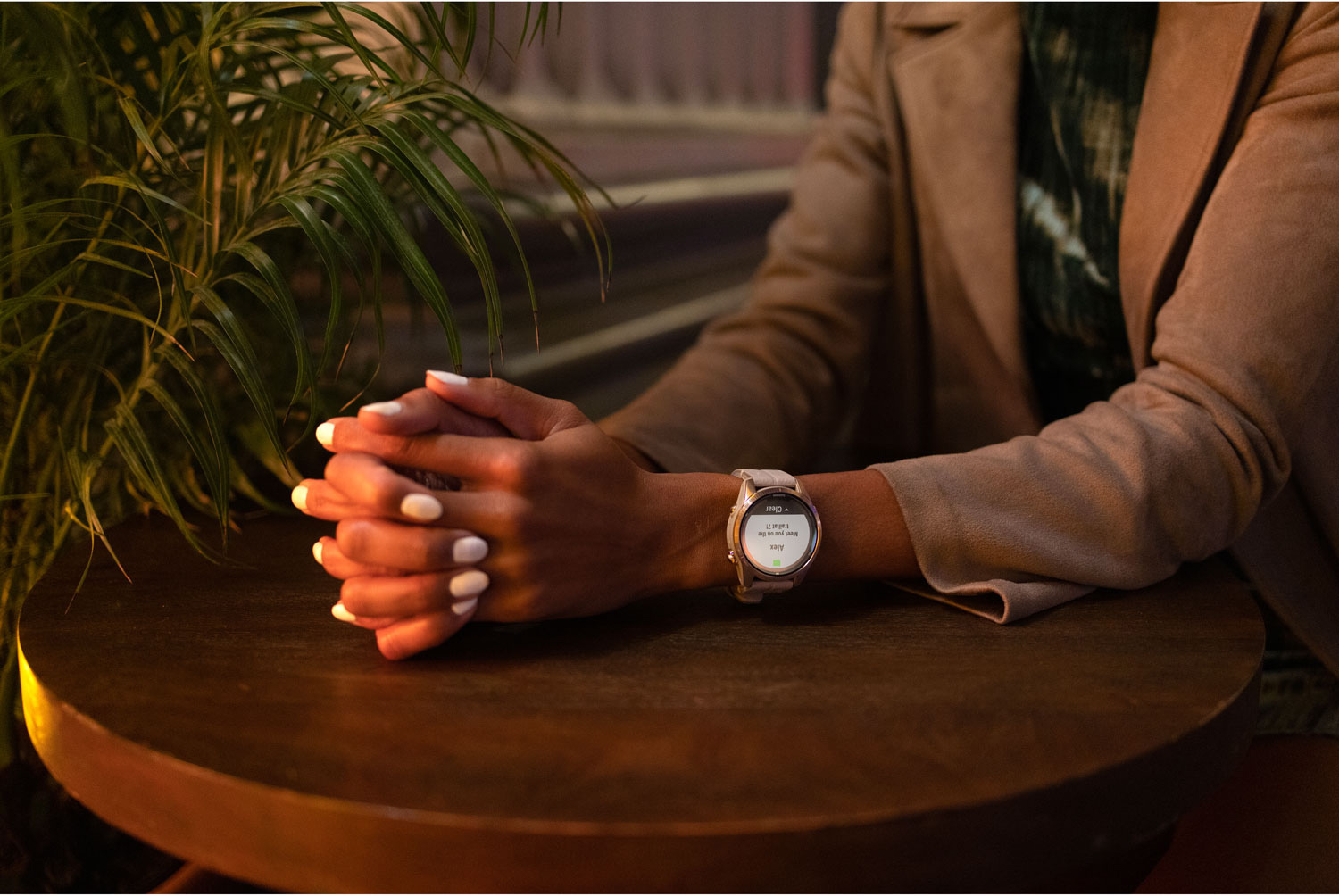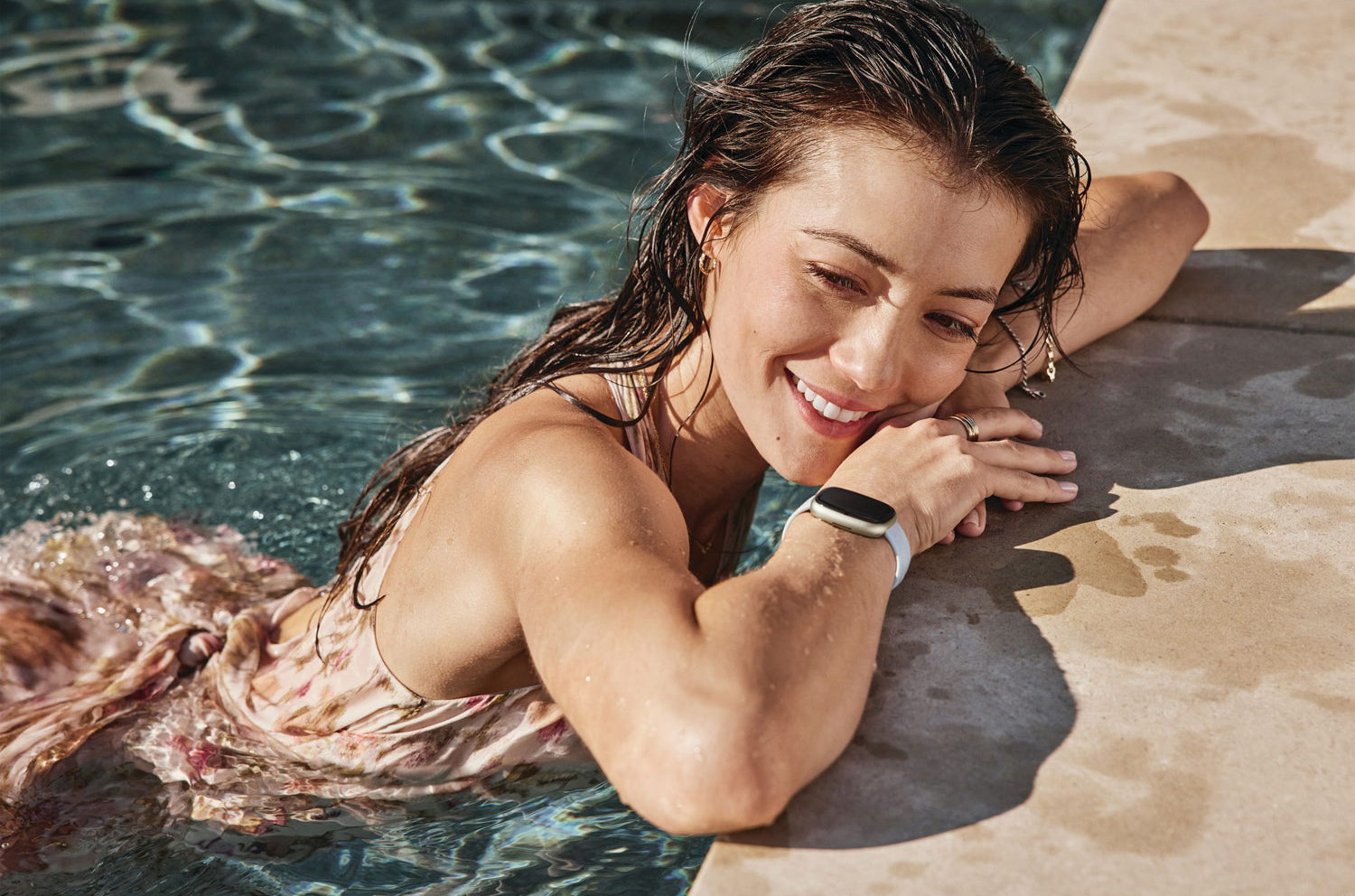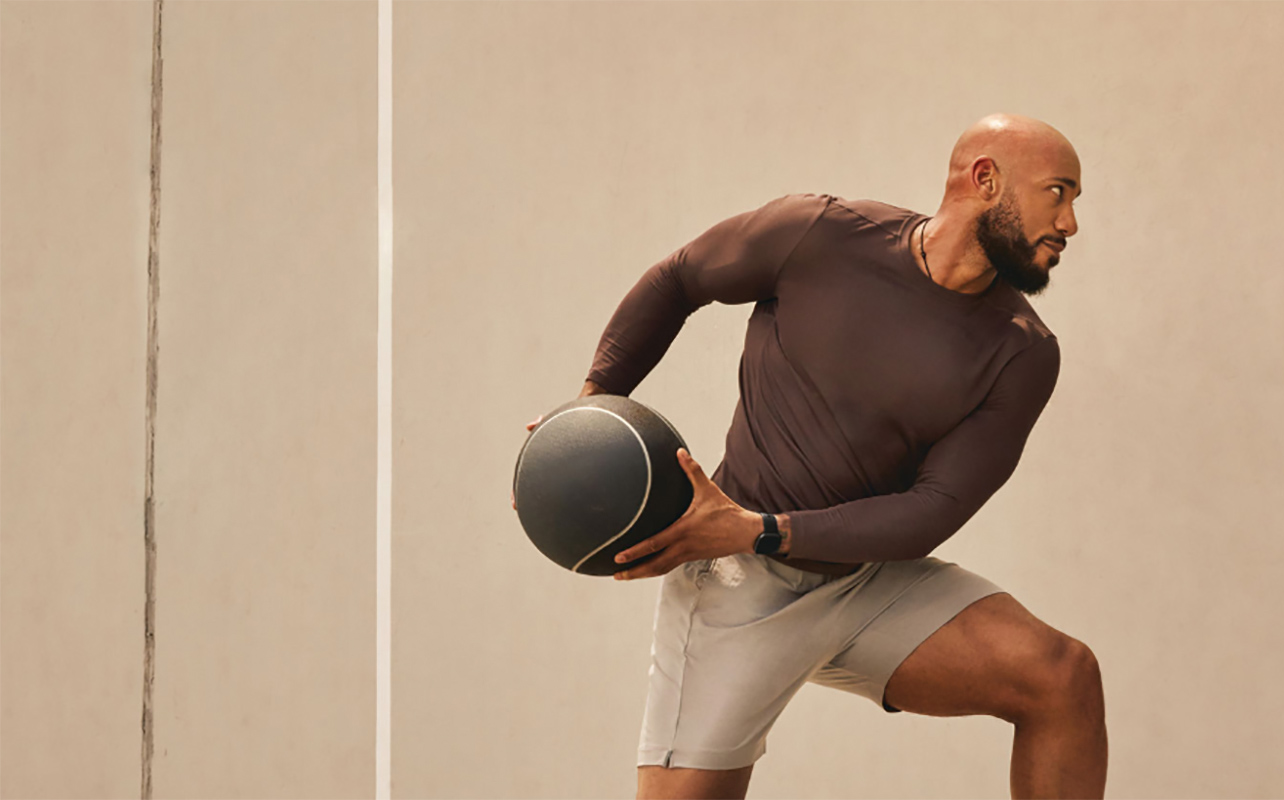
When you’re looking for a fitness tracker or smartwatch, the first thing you’ll notice is there are a lot of choices. When you’re choosing a standard watch that just tells time, you’re basing your selection mostly on style. But when you are choosing between a smartwatch or a fitness tracker, you’re basing your selection on much more. This includes style but also what features they have, why you want to use them, battery life, and more.
If you’re wondering whether you’d prefer a smartwatch or a fitness tracker, here’s a quick breakdown of how they are different, what features each has, and what you should consider before you make your choice.
What’s the difference between a smartwatch and a fitness tracker?

Both fitness trackers and smartwatches are designed to keep track of your health and exercise as well as deliver notifications to your wrist. You may find fitness trackers that don’t delivery notifications but it’s rare to find a smartwatch that doesn’t.
The main difference comes in terms of design and performance. A fitness tracker is typically a thinner, rectangular band you wear on your wrist that looks like a bracelet. Lately, fitness trackers also come in the form of smart rings you wear on a finger. They usually offer pretty good battery life of anywhere from 4-7 days per charge. They can deliver notifications but the words appear scrolling across the tiny screen in small lettering. The focus is on capturing your health and wellness data while you view stats in the companion app.
By contrast, a smartwatch has a larger square or round face that more resembles a wristwatch. This provides plenty of screen to view notifcations from all types of apps as well as messages, play games, follow navigation, control music, and more. They also keep track of all your health and wellness metrics. These tend to be more powerful devices which also means the battery drains more quickly. While you can find smartwatches that last for up to a week per charge, many require recharging every few days, some even daily.
Like a fitness tracker, a smartwatch will keep you up to date on how many steps you’ve taken, the distance you’ve covered, the calories you’ve burned, and many will also give you 24/7 heart rate. People choose a smartwatch over a fitness tracker so they can stay connected to their texts, calls, e-mail, and other social media updates as well. Some also prefer them as a wristwatch replacement.
GPS and GPS watches

When you begin your search for a fitness tracker or smartwatch, one of the features you’ll see offered is GPS. Global Positioning System (GPS) can locate wherever you are in the world thanks to a process called triangulation. Triangulation is determined by satellites, and to accurately track you, a signal is bounced back and forth while you’re running, walking, biking, or hiking. GPS can be very accurate, and it’s a great feature if you’d like to see maps of where you went on your run or you want a more precise idea of your speed or how far you ran.
One thing to note if you’re interested in GPS is that it’s offered either as built-in GPS or connected GPS. Built-in GPS gives you precise tracking for your distance and will map your routes right on the watch. This means you don’t need your phone along for your run. With connected GPS, your fitness tracker or smartwatch uses your phone’s GPS to track you. So, you’ll have to carry your phone along if you want to map your work out.
Pretty much every premium smartwatch has built-in GPS nowadays. Some fitness trackers so as well. Smartwatches (or fitness trackers) with GPS are a favourite for runners who are trying to improve endurance and pace. Cyclists also love them because they can identify speed, pinpoint exactly where they might have struggled on their ride, and map out where they’ve been.
Why choose a fitness tracker

With a fitness tracker on your wrist, you can track every step, run, and workout. If your main goal is to have a very detailed outline of your health and fitness data, a fitness tracker may be a perfect choice. We discuss everything you need to know about fitness trackers in our fitness and activity tracker buying guide, but here are some highlights.
Fitness trackers are simple to use and easy to wear
Most fitness trackers are designed like a bracelet. They’re usually quite thin, light, and made from water and sweat resistant materials so they stand up to all-weather workouts. Some fitness trackers have small touchscreens while others are styled like a watch with buttons you can press to scroll through your data.
A fitness tracker tracks all of your daily activity
Did you walk from the garden back into the house? Your fitness tracker will count those steps. Climbed up 10 flights of stairs to get to work? A fitness tracker will track your all-day activity, and that means your steps, distance, elevation (in some models), and the calories you burned during that activity.
When you have a fitness tracker with advanced features you’ll be able to choose custom workout profiles like hiking, HIIT training, and weight training and track those. Depending on which fitness tracker you choose you may be able to track swimming too. Some trackers offer multi-sport tracking if you do different sports during your daily workout. Many different types of fitness trackers will also track your sleep, so you can wear it all night and see how many hours of REM, light, and deep sleep you’re getting.
Fitness tracker apps offer additional tracking
With a fitness tracker, you should be able to look down at your wrist and see if you’re meeting your fitness goals. Once you sync your tracker with the companion app, you get a comprehensive view of the metrics. Some companion apps offer you food tracking, water-intake tracking, and weight loss or gain. In some cases, this requires syncing with another third-party app.
You can see all of your data over days, weeks, months, and if you wear it long enough, years. That data is great if you want to see how you improved or where you need to improve.
Fitness trackers with heart tracking and GPS
While a fitness tracker tends to be a simpler device than a smartwatch, you can find models with 24/7 heart rate monitoring and built-in GPS from brands like Fitbit, Samsung, Garmin, and Polar.
Why choose a smartwatch

If you want an all-in-one watch that keeps you as up-to-date on everything just like your phone does, a smartwatch could be the choice for you. Wearing a smartwatch is a lot like having your phone right on your wrist. With some, you can receive and answer phone calls, reply to texts and e-mails, get directions or view maps, and get all of your favourite app updates. At the same time, a smartwatch also tracks your fitness and other health metrics. Some models offer you onboard workout programs you can follow along right from the screen as well. You can learn all about smartwatches in our smartwatch buying guide, but here are some of the key things to note.
Smartwatches have a watch-like style
If you like the style of standard watches and don’t want to wear a fitness bracelet, you’ll love a smartwatch. Many of the different types are styled like a standard watch, with interchangeable watch straps, round faces, and eye-catching bezels. With a smartwatch, you should be able to see all of your data right on the screen. While you can sync your watch with your phone or computer, you’ll be able to access the same information on your wrist.
Smartwatches keep you connected via your favourite operating system
Just like you choose an Android or Apple phone, you can choose a smartwatch that runs on the Android or Apple operating system. The Apple Watch is the only smartwatch that runs the watchOS operating system, but there are many different types of Android smartwatch that run Google’s Wear OS.
While you don’t have to stick to the same type of operating system your phone runs, you may find some smartwatches have features that only work when paired with a compatible phone. For example, some smartwatches will only let you answer calls if you have a phone with a similar operating system. In some cases, some watches only work with one or the other. Apple Watches only work with iPhone, for example, and Samsung Galaxy watches work with Android and best with Samsung Galaxy phones.
If you choose a Wear OS watch, you should be able to load apps on it that run independently of your phone. That means you can still track your fitness, but you can leave your phone at home.
Smartwatches track your fitness too
As mentioned, some smartwatches offer step-by-step workouts right on your wrist. You can also find smartwatches with multiple workout options to customize how you track your fitness, and they’ll also track everything fitness trackers do including distance, steps, calories burned, and in some cases, elevation.
Like fitness watches, smartwatches have companion apps you can use to track even more data. One of the biggest differences between a fitness tracker and a smartwatch is that you can add apps to your smartwatch. If you use Strava or Runkeeper to monitor your runs, you’ll be able to use that app right on your wrist.
Smartwatches offer heart rate monitoring and GPS
There are many different smartwatches with 24/7 heartrate monitoring, and with a touchscreen on your wrist, you can see your heartbeat in real-time. Smartwatches from brands like Garmin, Apple, Fitbit, and Samsung offer accurate heart rate monitoring, and over time will let you know your resting heart rate as well as how you perform in different heart rate zones. Some will even offer a Pulse Ox sensor to monitor your oxygen saturation level. Smartwatches like the Apple Watch have built-in electrocardiogram to detect irregular heartbeats.
Should you choose a smartwatch or fitness tracker?

There are advantages to choosing each of these devices. In general, a fitness tracker is perfect for someone who wants relatively basic fitness tracking they can monitor in a companion app. They are great for motivation without being distracting.
The person who chooses a smartwatch wants access to data right on their wrist. They may also appreciate notifications, like e-mails, incoming calls, calendar appointments, and more. A smartwatch will track fitness too, and you have the added bonus of adding your favourite fitness (and other!) apps to your watch as well.
A variation of both will include GPS, ideal for those who engage in outdoor activities like running, walking, cycling, and hiking. You’ll be able to use the features to not only map your routes but also get data to help improve your endurance, speed, and more.
Find a wide selection of wearable technology, includinh both fitness trackers and smartwatches, at Best Buy right now.






Thank you this was , very helpful to explain the difference in these watches ,when a person is not formiliar with electronics and is explained very well in simple terms ,so I will know what I would like to buy thank you dianna
Would a fitness tracker be a wise gift for someone who wears an ICD please? He would be more confident being able to track his blood pressure levels during the day or an evening out.
Hi Susan,
I sent your question to the smartwatch team at Best Buy’s head office and got this reply: None of the watches will track blood pressure – that is in the future at some point.
If it is ECG/EKG you are after, currently Fitbit Sense & Apple Watch S6 & S7 have it.
Best regards,
Martin
Comments are closed.